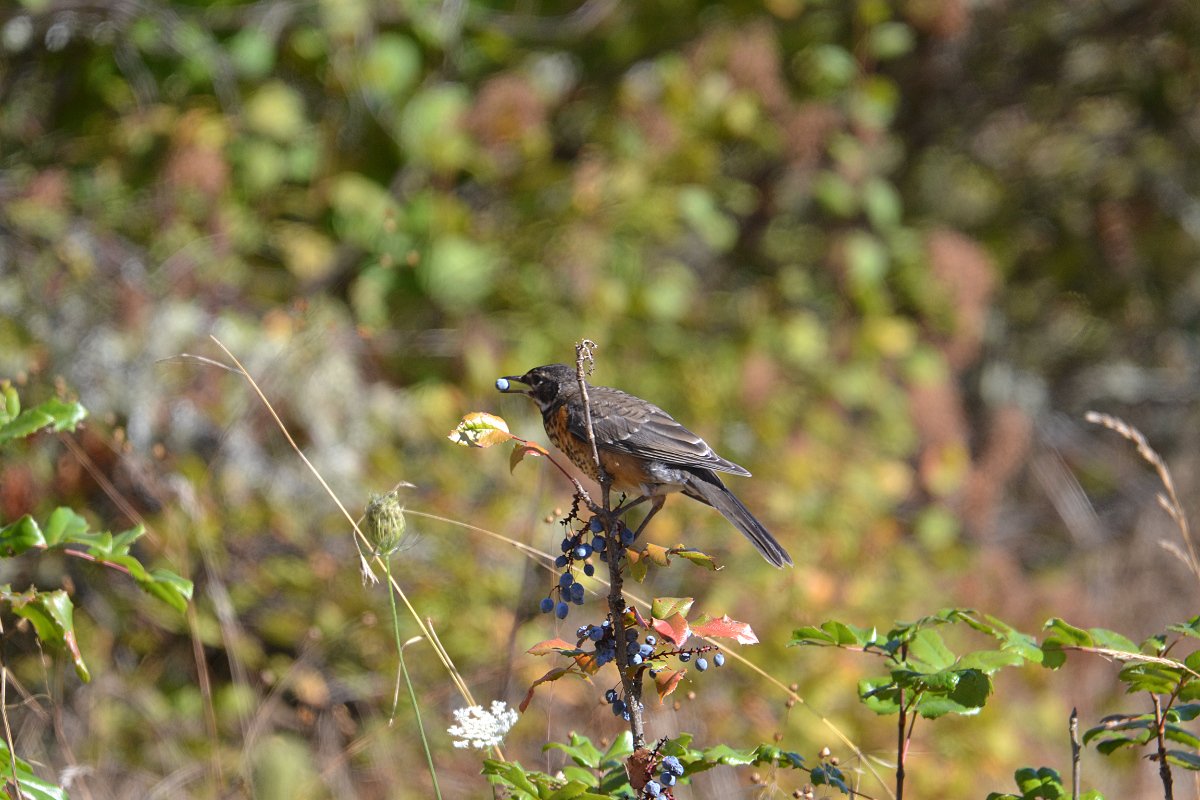Walking along the incense cedar trail there are thousands of cones and seeds scattered on the path. As I walk underneath an incense cedar, there is a carpet of woody cones like fresh mulch has been applied. The cone has a rich reddish-brown color. Its shape splits open into 3 segments freeing the seeds inside that have a light-colored wing attached.
As I knelt down to pick up one of the seed pods, I thought about the incredible volume of seeds that are produced throughout the arboretum. I realized that I am constantly seeing birds eating seeds. Today I watched a flock of juncos eating seeds on the ground out at the barn. Goldfinches were foraging on or near the ground out in the south meadow. I am sure they were finding seeds from plants such as grass, tarweed, and thistle that grew out there over the summer. Seeds are a huge part of the food chain for animals such as birds, mice, voles, squirrels, chipmunks, and many insects.
Seeds are usually small and easily disappear when they fall to the ground. So, they can quickly fall out of awareness. That said, I feel like I am reminded of their presence every morning when I put on my tennis shoes. Walking through the meadow over the summer, my shoes collected seeds that seem permanently imbedded in the fabric. Truly an amazing part of the life cycle of plants.
































































